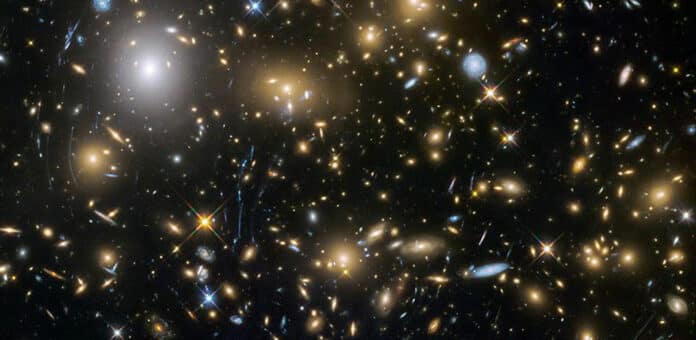Understanding the early Universe, when the first stars and galaxies formed, is one of the major goals of new observatories. Thanks to data obtained from India’s SARAS3 radio telescope, Scientists from the University of Cambridge shed light on the very early Universe – just 200 million years after the Big Bang. Moreover, they could place these limits on the earliest galaxies by not finding the signal they had been looking for, known as the 21-centimeter hydrogen line.
The non-detection allowed the scientists to draw other conclusions about the cosmic dawn, putting constraints on the early galaxies and allowing them to rule out possibilities such as galaxies that were both effective radio emitters and inefficient cosmic gas heaters.
The results are a proof-of-concept study that paves the way to understanding this period in the Universe’s development.
The SKA project, which involves two next-generation telescopes, is expected to be able to capture images of the early Universe. However, the issue for present telescopes is to find the cosmological signal of the first stars, which is re-radiated by dense hydrogen clouds.
To detect the 21-centimeter line, astronomers look for a radio signal produced by hydrogen atoms in the early Universe, affected by light from the first stars and the radiation behind the hydrogen fog. The results of the SARAS3 analysis are the first time that radio observations of the averaged 21-centimeter line have been able to provide an insight into the properties of the first galaxies in the form of limits of their main physical properties.
Harry Bevins, a Ph.D. student from Cambridge’s Cavendish Laboratory and the paper’s lead author, said, “We were looking for a signal with a certain amplitude. But by not finding that signal, we can limit its depth. That, in turn, begins to inform us about how bright the first galaxies were.”
Our analysis showed that the hydrogen signal could inform us about the population of first stars and galaxies,” said co-lead author Dr. Anastasia Fialkov from Cambridge’s Institute of Astronomy. “Our analysis places limits on some of the key properties of the first sources of light, including the masses of the earliest galaxies and the efficiency with which these galaxies can form stars. We also address how efficiently these sources emit X-ray, radio, and ultraviolet radiation.”
Dr. Eloy de Lera Acedo from Cambridge’s Cavendish Laboratory, who co-led the research, said, “This is an early step for us in what we hope will be a decade of discoveries about how the Universe transitioned from darkness and emptiness to the complex realm of stars, galaxies and other celestial objects we can see from Earth today.”
“Our data also reveals something which has been hinted at before, which is that the first stars and galaxies could have had a measurable contribution to the background radiation that appeared as a result of the Big Bang and which has been traveling towards us ever since,” said de Lera Acedo, “We are also establishing a limit to that contribution.”
“It’s amazing to be able to look so far back in time – to just 200 million years after the Big Bang- and learn about the early Universe,” said Bevins.”
Journal Reference:
- H. T. J. Bevins et al. ‘Astrophysical constraints from the SARAS 3 non-detection of the cosmic dawn sky-averaged 21-cm signal.’ Nature Astronomy (2022). DOI: 10.1038/s41550-022-01825-6
